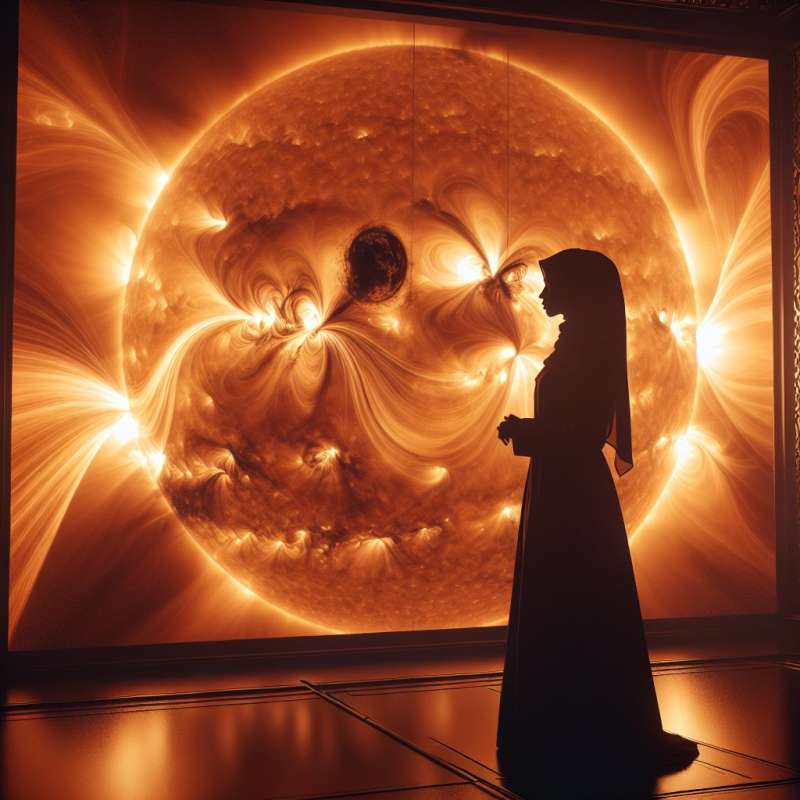
The Sun's Fiery Origin
The Sun formed approximately 4.6 billion years ago from a solar nebula, a giant, rotating cloud of gas and dust. Gravitational collapse at the nebula's center initiated the Sun’s birth.
Nuclear Fusion Heart
The Sun's core is extremely hot and dense, allowing nuclear fusion to occur. Here, hydrogen atoms merge to form helium, releasing vast amounts of energy in the process.
Balancing Gravity and Pressure
The Sun maintains equilibrium by balancing gravitational forces, pulling inward, with immense thermal pressure from fusion, pushing outward. This delicate balance supports the Sun’s massive structure.
Sun's Magnetic Complexity
The Sun exhibits a complex magnetic field, generated by electric currents within its plasma. This field is responsible for phenomena such as sunspots, solar flares, and coronal mass ejections.
Multilayered Solar Atmosphere
Beyond the visible surface, or photosphere, the Sun has several atmospheric layers. The chromosphere and corona extend outward, with the corona reaching temperatures exceeding millions of degrees Celsius.
Solar Cycle Mysteries
The Sun undergoes an 11-year solar cycle, marked by varying sunspot numbers. This cycle impacts space weather and climatic conditions on Earth, yet its underlying mechanisms are not fully understood.
Sun's Future Evolution
In about 5 billion years, the Sun will exhaust its hydrogen fuel, expanding into a red giant. Eventually, it will shed its outer layers, leaving a white dwarf to cool over billions of years.Sun's Sound Waves
The Sun emits sound waves, but they can't be heard in space as sound doesn't travel in a vacuum.
What initiated the Sun's formation?
A supernova explosion
Gravitational collapse of nebula
Collision with another star
Company